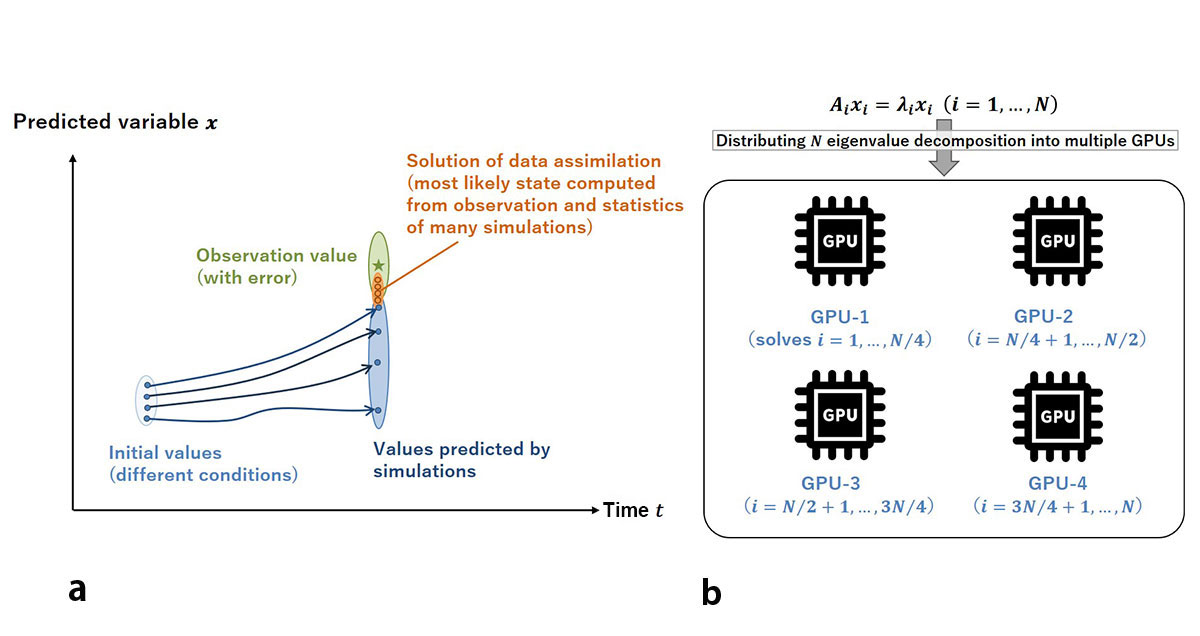 |
Topics
Development of GPU-Driven Fast Assimilation of Fluid Analysis and Observation Data

Fig. 1 Schematics of the data assimilation
Data assimilation (DA) is a technique that combines real-world observational data with numerical simulations to improve the accuracy of numerical predictions. Originally developed for numerical weather prediction, DA has now expanded to computational fluid dynamics (CFD) analysis, opening possibilities for broad applications across various scientific and engineering domains.
As a high-precision DA method, we utilize the local ensemble transform Kalman filter (LETKF). A challenge is that LETKF requires large computational resources to solve numerous matrices. In this study, Japan Atomic Energy Agency (JAEA) and RIKEN collaborated to develop a fast LETKF solver using multiple GPUs.
In LETKF, multiple simulations under varying conditions (ensemble calculations) are performed, generating statistical quantities such as means and variances. These quantities are then used to assimilate observation data, requiring the eigenvalue decomposition of numerous matrices derived at all CFD grid points (ranging from tens of thousands to hundreds of millions). This process is a bottleneck with respect to the overall execution time. In this study, RIKEN developed an eigenvalue decomposition solver named "EigenG-Batched," specifically optimized for matrix problems used in LETKF. Meanwhile, JAEA optimized data communication across multiple GPUs. As a result, utilizing 64 GPUs on the "Wisteria-Aquarius" supercomputer at the University of Tokyo, we achieved 45-fold speedup compared with the naïve implementation.
Acknowledgements
This study was supported in part by JSPS KAKENHI Grant-in-Aid for Early-Career Scientists (Grant Number JP21K17755) and JHPCN (Project ID: jh210049, jh220030, jh220031) , and was conducted in collaboration with RIKEN.
We used the Wisteria/BDEC-01 supercomputer system at the Information Technology Center, the University of Tokyo (ITC).
Author (Researcher) Information
 | Name | Yasuhiro Idomura |
|---|---|
| HPC/DX Research and Development Office, Center for Computational Science and e-Systems |
Reference
January 30, 2025
Computational Science and e-Systems Research
